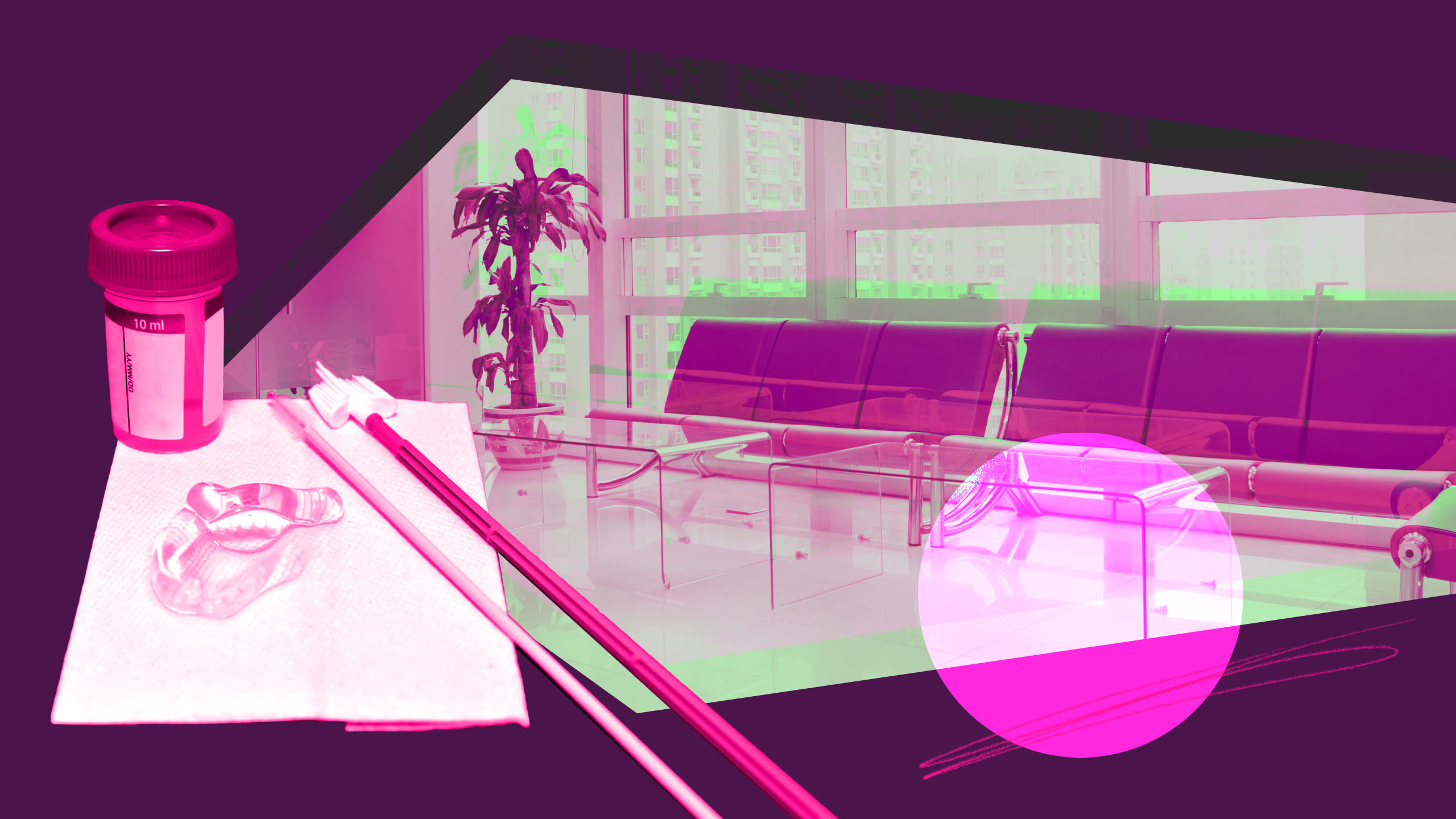Going to the doctor for a Pap test can be daunting, especially for queer and trans people. Many of us fear being judged for our identities, or being denied care. Because of this, LGBTQ2S+ people are much less likely to get Pap smears and cervical cancer screenings.
When providers do not know how to care for LGBTQ2S+ patients, they alienate them and make them more reluctant to seek care. Lack of knowledge can also result in practitioners giving inaccurate information to queer people about whether or not they need Pap tests. In truth, all people with a cervix need to get a Pap test every three years.
Transmasculine people, especially, are severely negatively impacted by barriers to care—the 2015 National Transgender Discrimination Survey found that only 27 percent of transmasculine respondents reported having had a Pap test in the past year, compared with 43 percent of the U.S. adult cisgender female population. A 2018 study examining trans men’s access to gynecological care found that 70 percent of respondents avoided seeking reproductive healthcare because of having to educate providers.
However, small changes can help queer and trans people feel more welcome in clinical settings, and increase their rates of cervical cancer screenings. Here’s how OB/GYNs and reproductive health clinics can become more inclusive to LGBTQ2S+ patients—and how patients can advocate for more competent treatment themselves.
Make the waiting room an inclusive space
Sitting in a gender-coded waiting room can invite stares, questions and, in some cases, even violence toward queer and trans people. In fact, 92 percent of trans men report feeling anxious about seeking gynecological care. For many, that anxiety is linked directly to sitting in a waiting room with cis women.
Grayson Schultz, a 33-year-old disabled trans man from Ohio says that the further along he got in his transition, the more uncomfortable he became in highly gendered spaces.”I find myself feeling like I’ve been ‘outed’ without my consent [by] sitting in the waiting room.”
Making the waiting room more inclusive for queer and trans people can mean adding signage indicating that it is a welcoming space. According to Erin Baroni, a clinical instructor of internal medicine and pediatrics at University of California, Los Angeles, and a primary care physician, says that often waiting rooms are overtly gender-coded. For example, when a patient goes for a mammogram or a screening, they may encounter a pink-walled waiting room, or have to wear a pink gown. Trying to remove things that indicate certain gender norms in the office is important She adds, “Putting up a queer symbol in your clinic can really go far. Like the badge that I wear has the rainbow symbol and the amount of times I’ve been told by patients like, ‘Oh, I feel like I can talk to you just for that.’ It’s a big thing.”
Ensure that the intake questionnaire is not cis- or heteronormative
“I once approached a general practitioner because I had an itchy crotch,” shares Anjali Singh, a 23-year-old lesbian based in Vancouver. “I was concerned it may be bacterial vaginosis or a yeast infection.”
Singh’s doctor only asked one question about her sexual history: “Have you had sex?”
When Singh asked her to clarify what she meant, the doctor only asked if she’d “had any sexual activity.” The question had somehow become even more vague. Singh asked the doctor once again to clarify.
“Frustrated, she raised her voice and asked if I’d had a penis in my vagina recently,” Singh says. “I said no, and the doctor put on her gloves and administered the Pap smear.”
The lack of inclusivity and specificity in the doctor’s questioning left Singh feeling dissatisfied and unable to access competent care.
Questionnaires or pre-exam questions that do not gather information about basic things such as pronouns, gender identity, sexual orientation and the different kinds of sexual activity a person engages in leave doctors with an incomplete understanding of a patient’s needs. “My doctor did not ask if I’d had digital sex, oral sex, anal sex. She did not ask if I’d had any interaction with another person’s bodily fluids. She did not ask if I used lube, sex toys or dental dams. She did not ask about my hygiene routines,” adds Singh, which meant that the physician did not fully check for latex allergies, infections caused by soaps and more.
Non-comprehensive forms can also lead to issues with insurance when patients’ names do not match their insurance paperwork.
Questionnaires that are pre-filled, which providers can read before an appointment, can help queer and trans people feel less put on the spot to answer difficult questions, and more at ease knowing that the provider is prepared to see them.
Explain the process & get familiar with the speculum
The actual process of getting a Pap test can be physically and emotionally taxing for many. Breaking it down and explaining each part can help patients feel more at ease—especially those whose dysphoria or trauma might be triggered during Pap tests.
“It helps when the doctor walks me through the procedure: how long it’s going to take, if there’s going to be discomfort, just how it works,” says Tyson Marzouq, 25, a queer trans man from Los Angeles, California. “My physician showed me the tool, what it looks like and how it works, and it was a pretty quick process. They gave me privacy to prepare for it. And then when they came back, it was a very friendly, very open, educational moment,” they add.
Asking clients if they want to see the speculum or understand more about how it works can be useful. Since the insertion of tools like a speculum can be triggering to patients, it may be helpful to explain why a speculum is needed and allow them to touch it and get a sense of it before it is used.
Patients can ask doctors to use a pediatric speculum, which may reduce discomfort in the exam. Patients can also research beforehand, and ask to see and get familiar with the speculum, even if the doctor does not suggest that themselves. In an exam, you may also request the doctor to allow you to insert the speculum yourself in some cases, under the guidance of the doctor.
Other techniques, such as not using too much lubricant, verbal relaxation exercises and more, can also be useful for improving patient experiences during a Pap smear.
Don’t wait for a complaint
“Doctors are in severe need of a better sexual health education. With a medical degree and years of experience, my doctor should’ve been smarter than me,” says Singh.
Making a queer or trans person feel that they need to provide a workshop or information session during their appointment can decrease trust. If a person does not think they are getting adequate treatment, they can become more resistant to seeking care in the future.
According to Baroni, the biggest barrier to queer and trans people seeking Pap smears and reproductive healthcare is the lack of education in providers. “We’ve been working for over a decade to increasing queer and trans education at the medical school level. But still, it’s not where we need it to be.”
The onus is often on providers to educate themselves—and few take the time. “I find that, unfortunately, a significant portion of our community has to advocate for their own healthcare,” she adds. She believes that there is an urgent need for more education on trans healthcare, appropriate language usage, and on making Pap smears a safe experience for queer and trans people.
At the end of the day, a doctor’s role is to support the patient and to help them access the best care possible. If, as a patient, one feels that they are not receiving the standard of care expected, asking for a referral to a different doctor or clinic is perfectly acceptable. Sites like Transgender Care Listing, OutCare and GLMA can help people find healthcare near them that is queer and trans friendly and affirming.
“By unpacking and adjusting how we support each other around gender and sexuality, we’re working to undo a lot of harm done to a wide variety of folks,” says Schultz.


 Why you can trust Xtra
Why you can trust Xtra